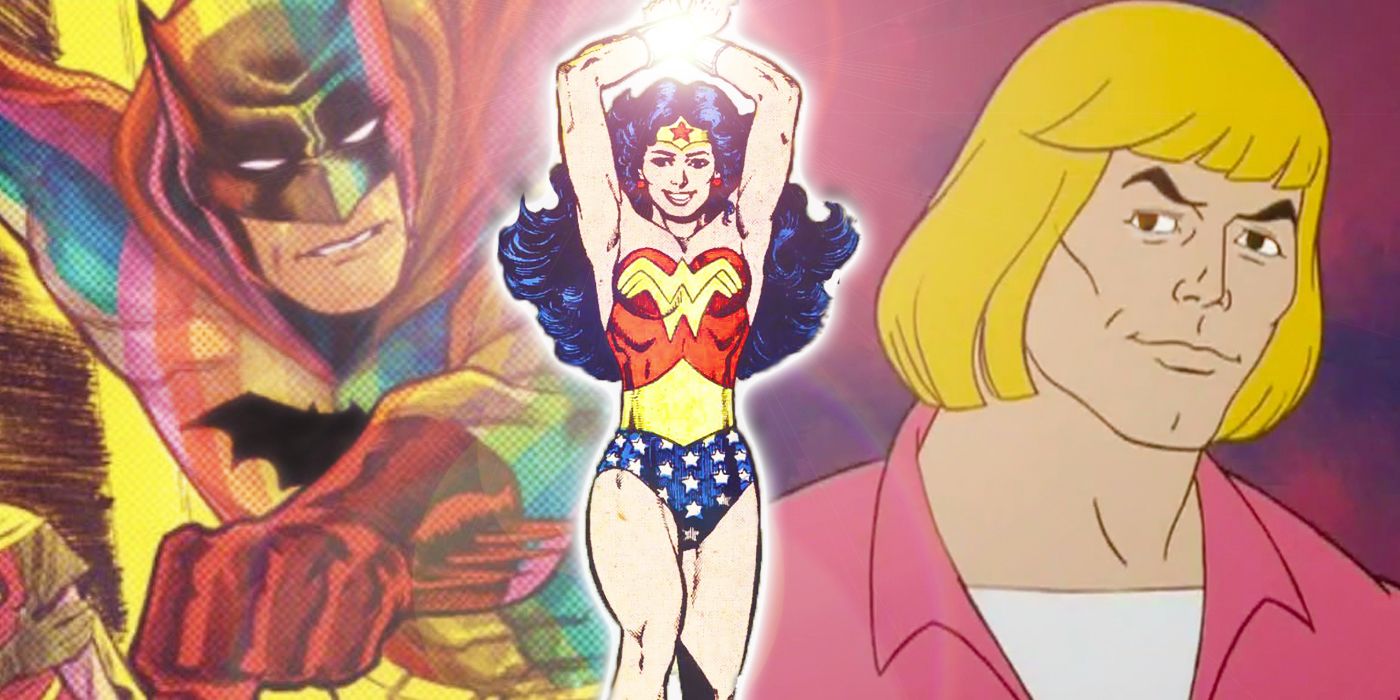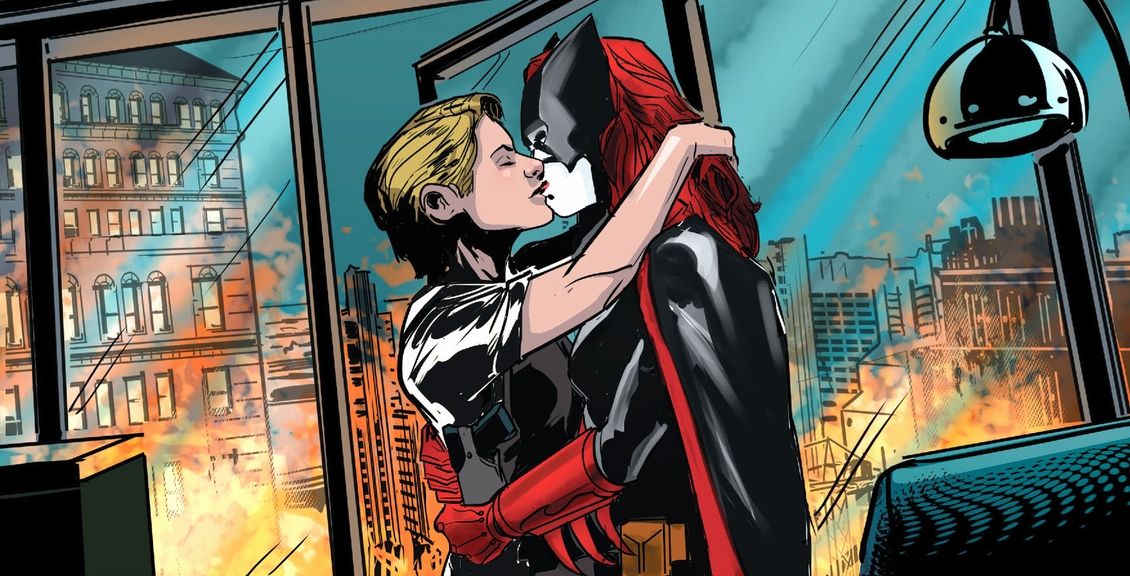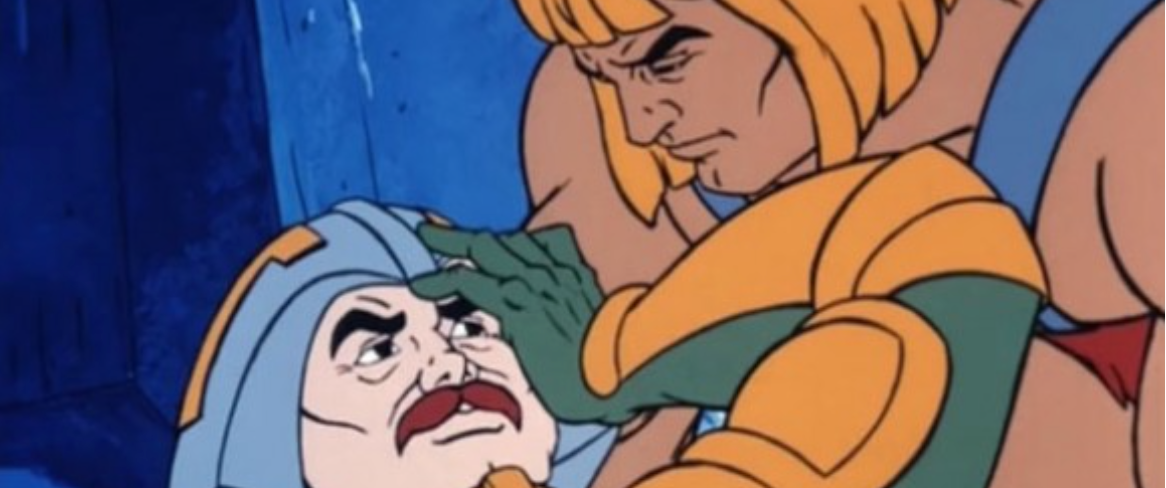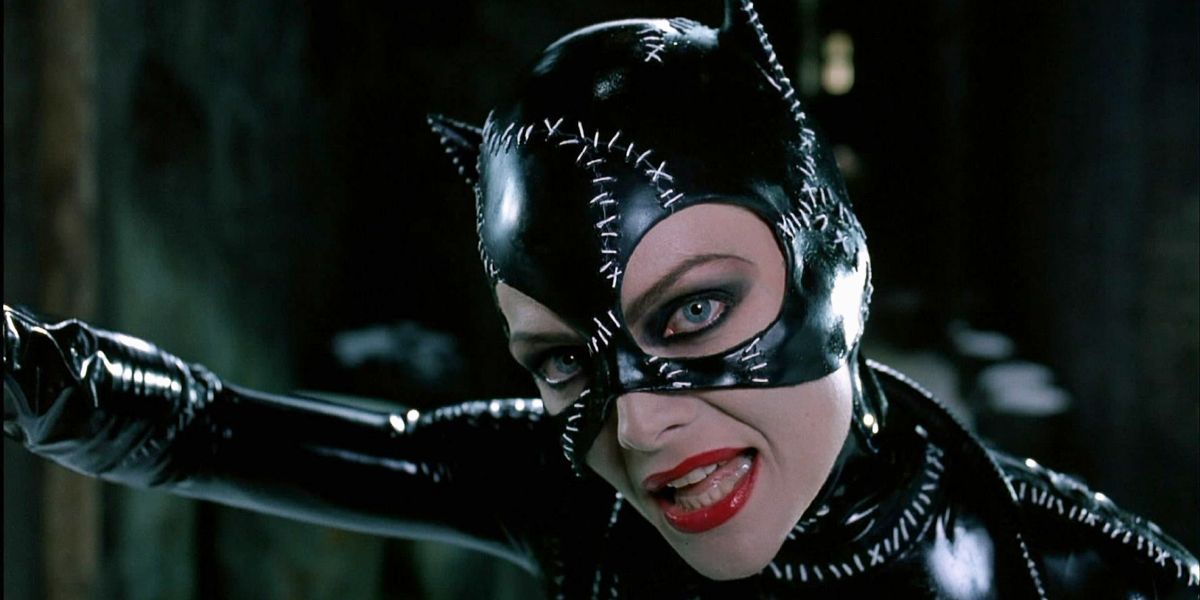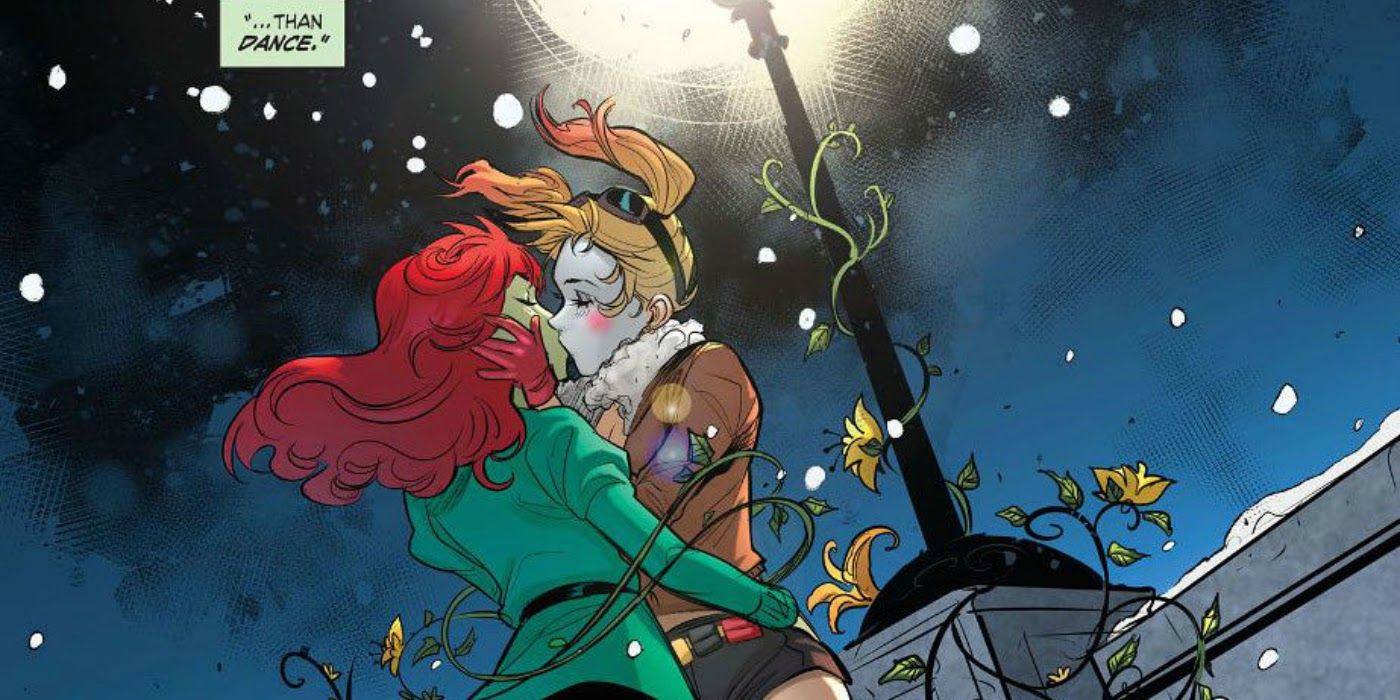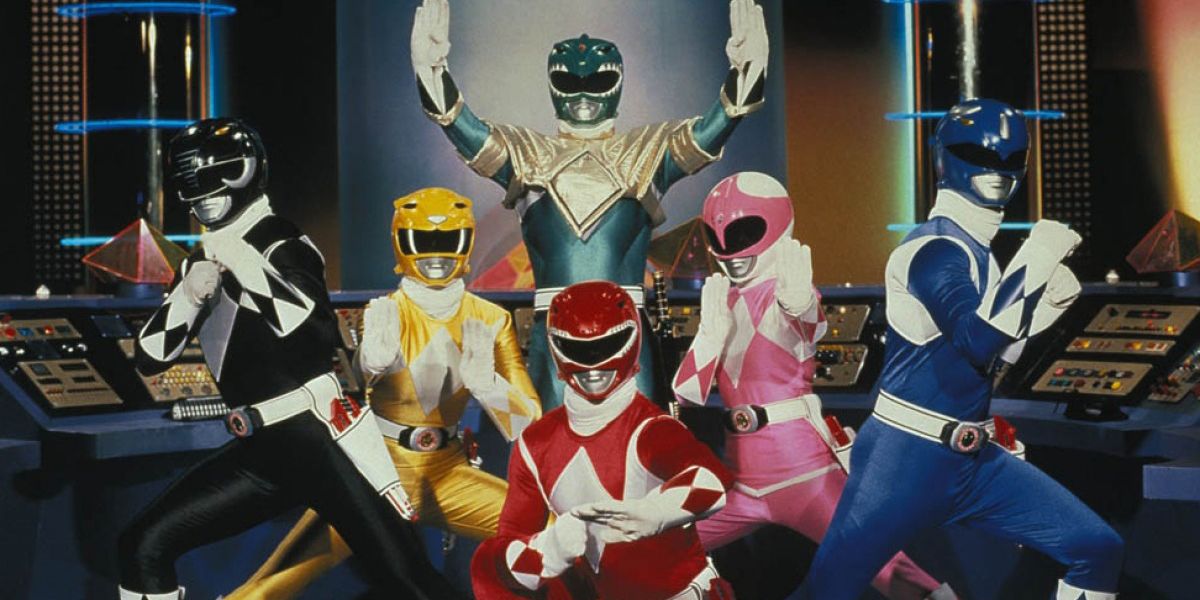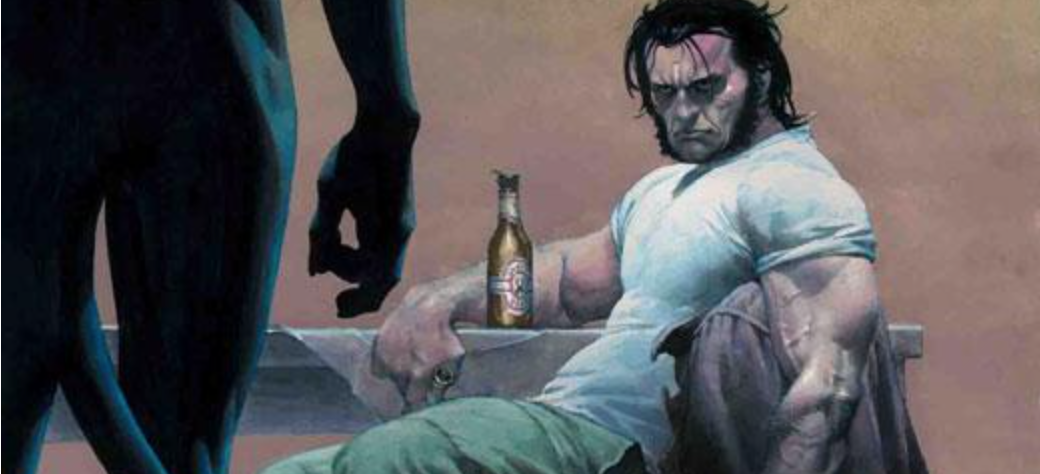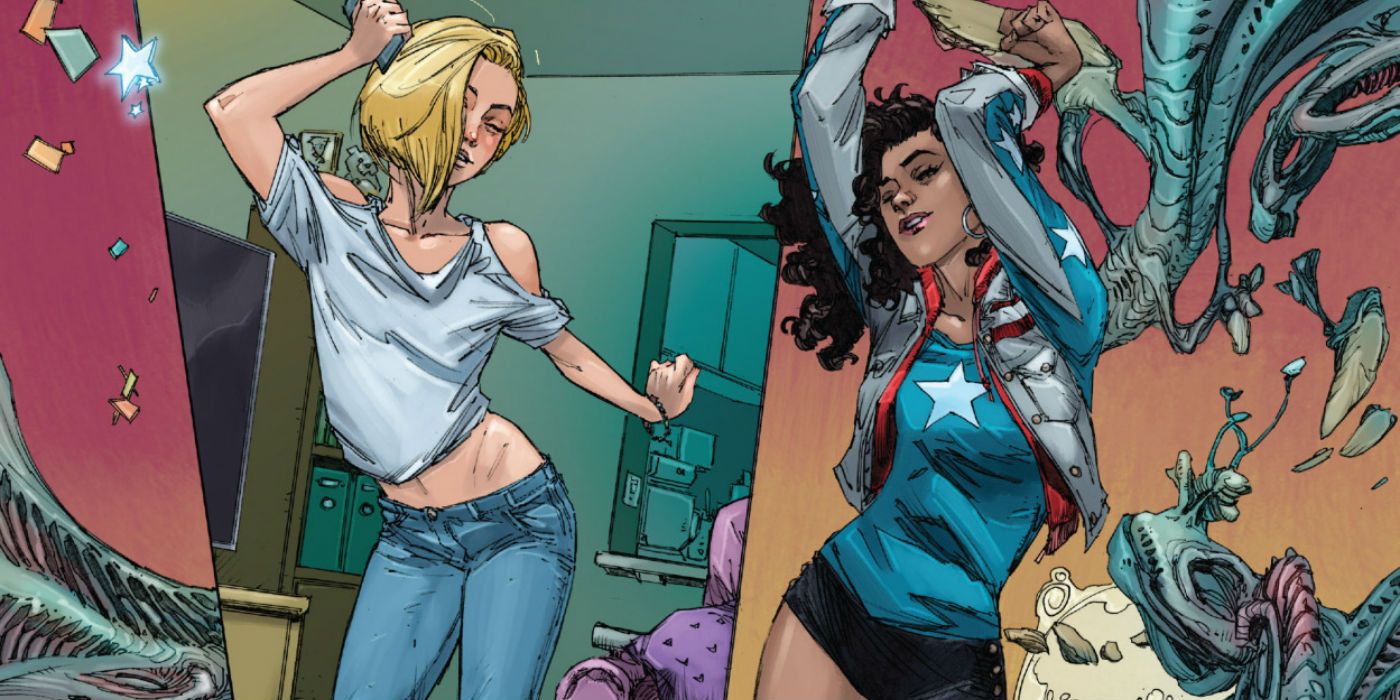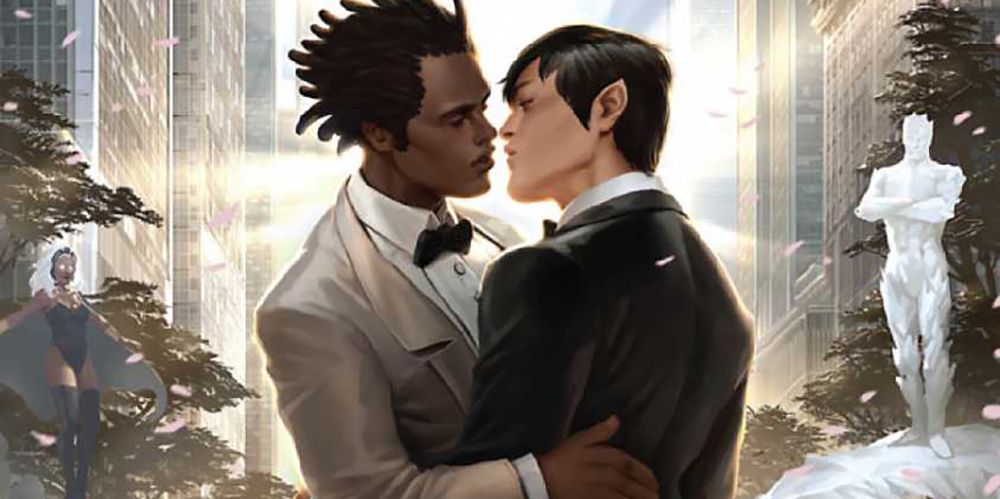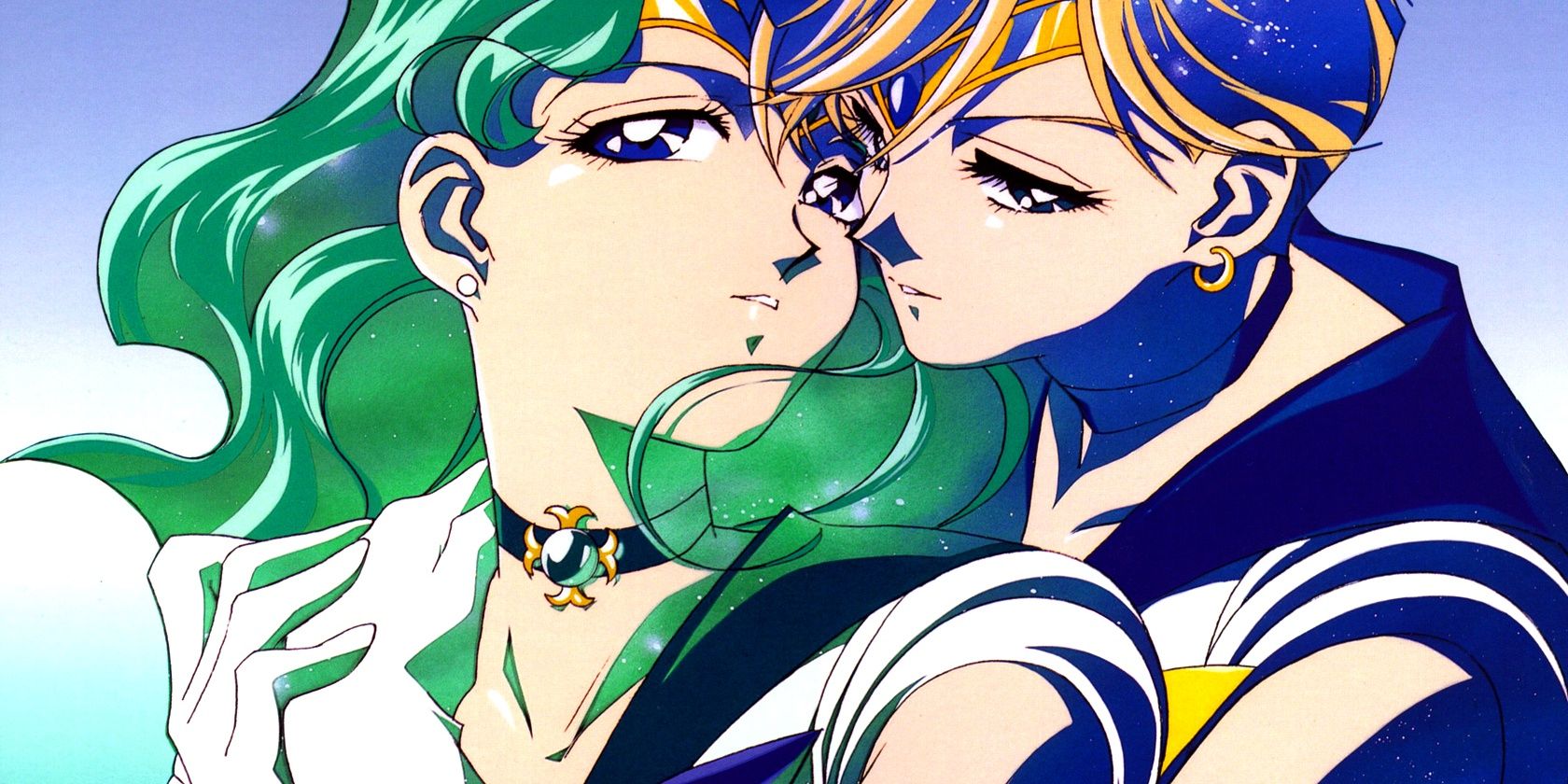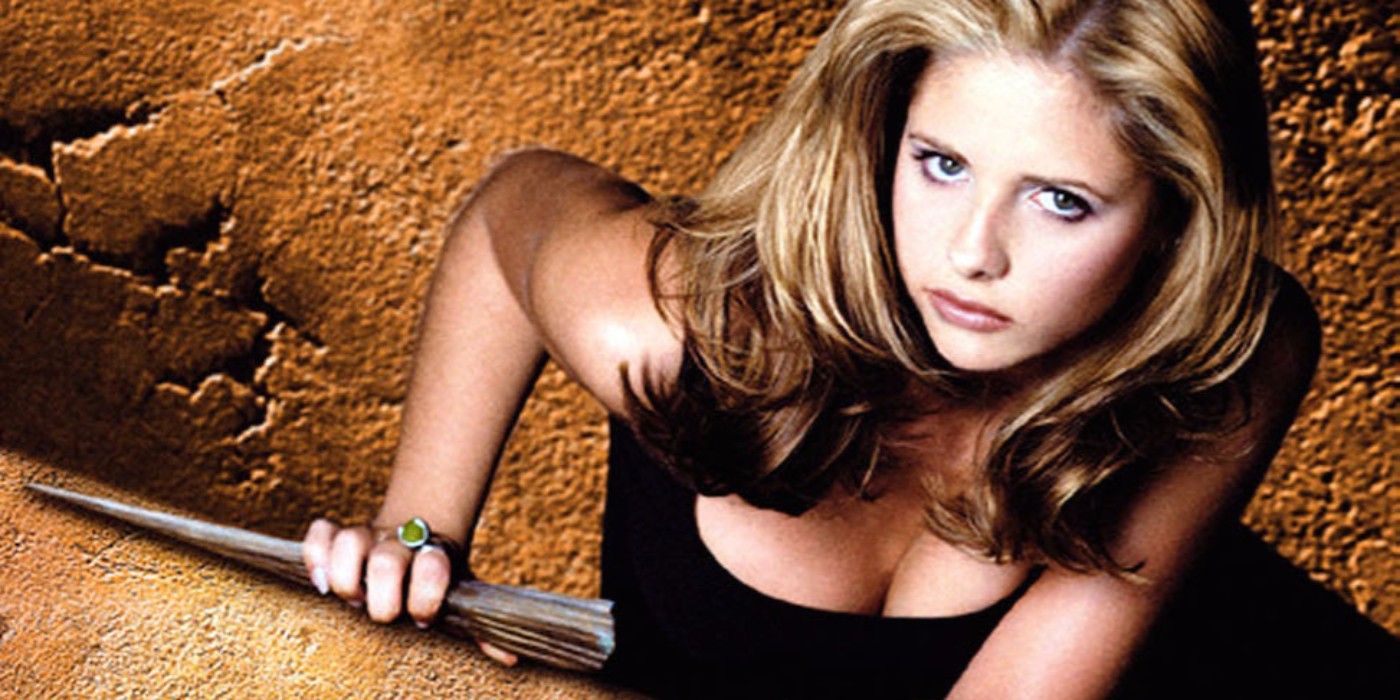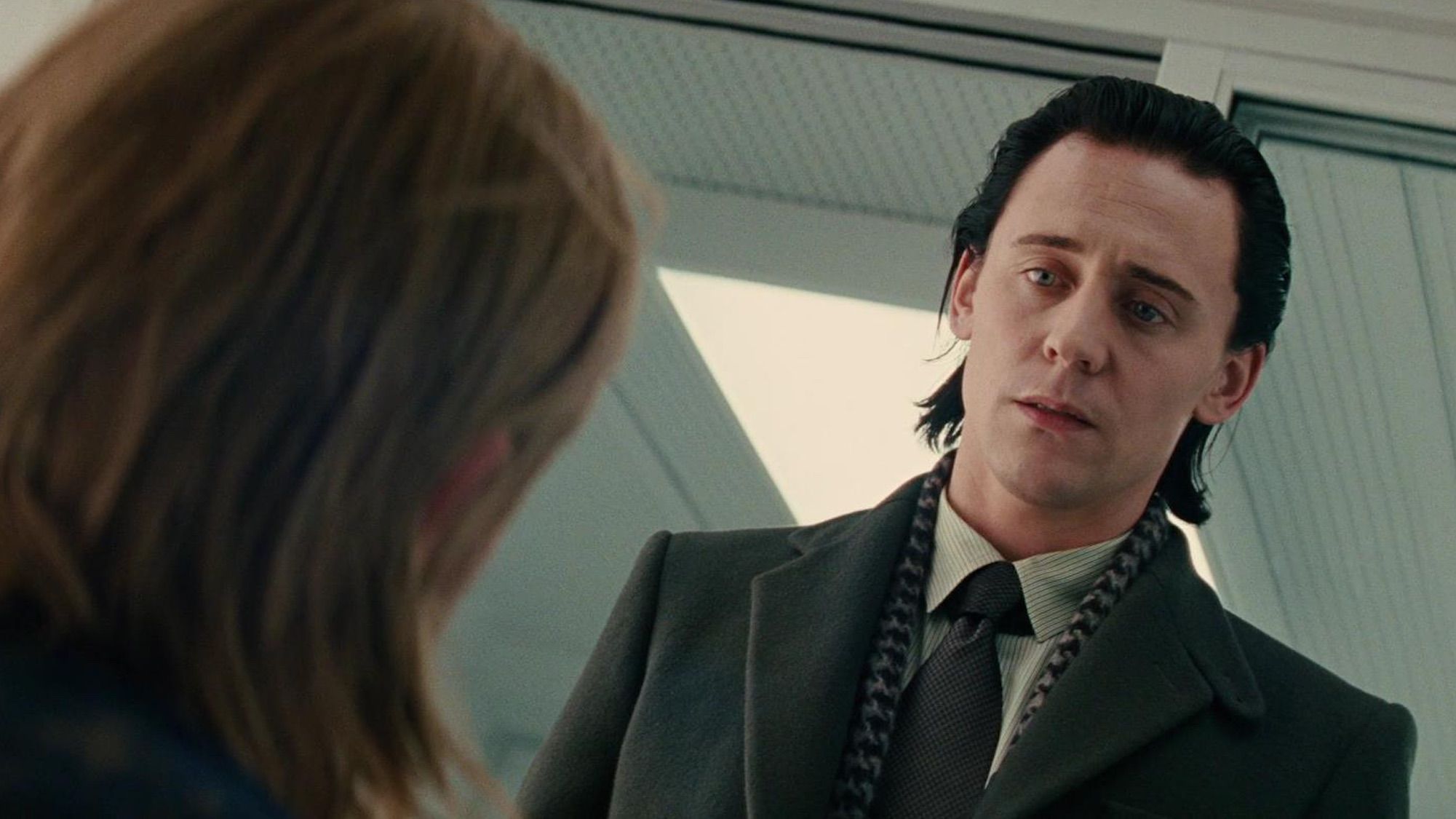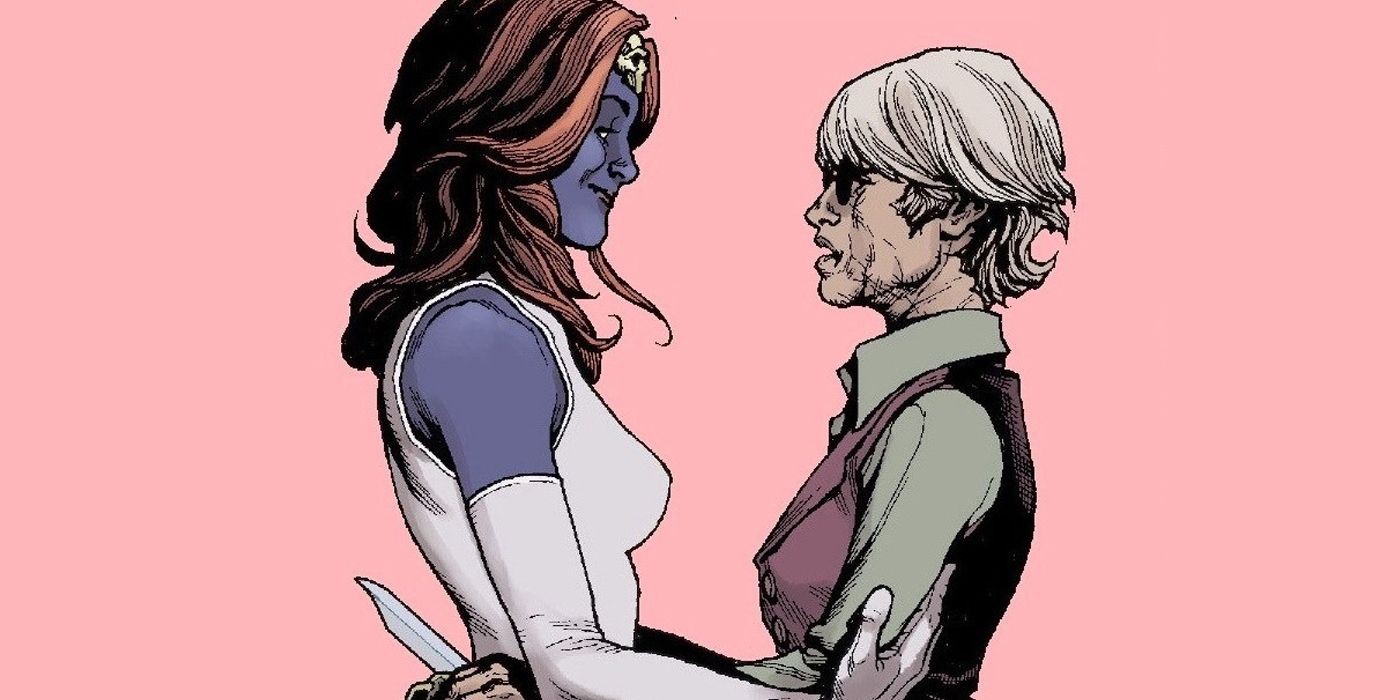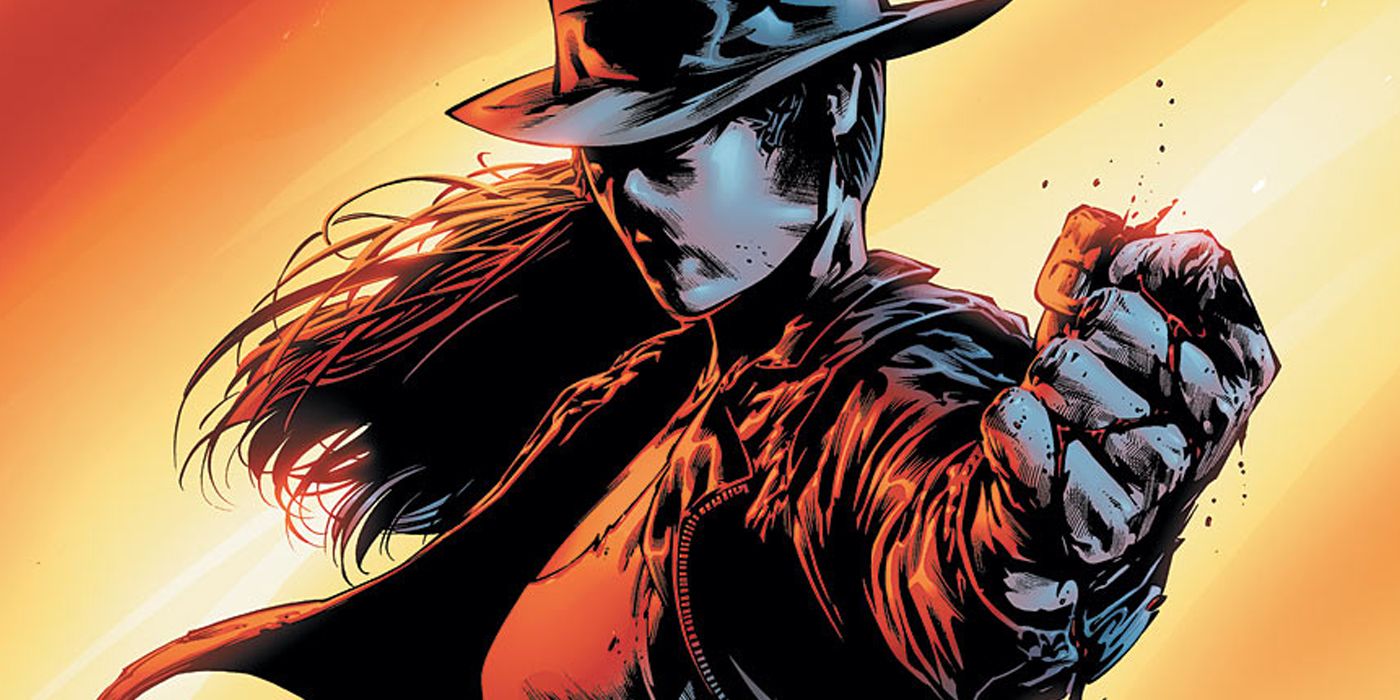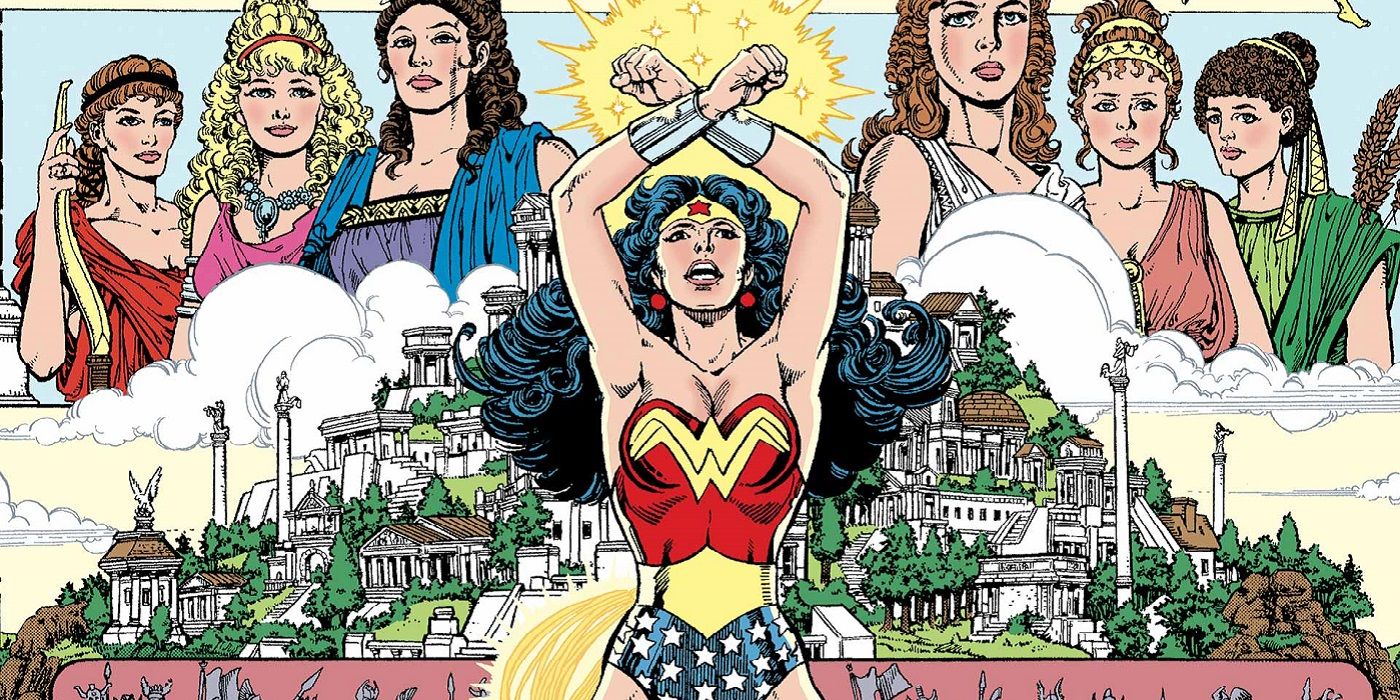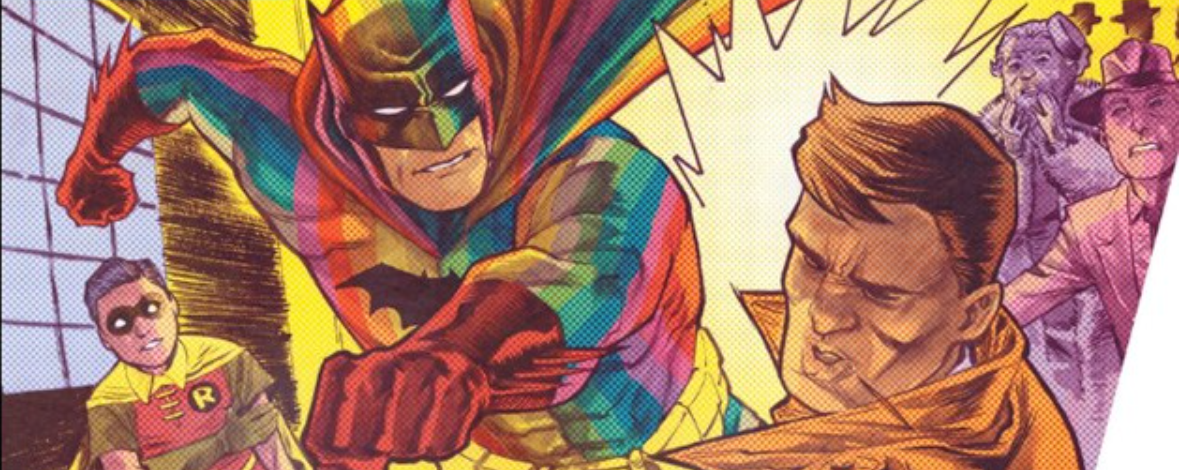What makes someone a gay icon? Well for starters, being a woman helps, and usually a heterosexual one at that. The queen of them all, Judy Garland, embodies everything traditionally associated with the label -- beauty and poise on the surface masking a broiling sadness within. Even to this day, being a "Friend of Dorothy" is recognizable code for gay men. But, gay icons can also be men -- camp or butch, straight or gay -- and for the female members of the LGBTQ+ community, gay icons often take the shape of strong, capable women -- gay, straight or otherwise -- who defy traditional gender norms.
RELATED: 15 Characters You Never Knew Were In A Gay Relationship
Because of a persistent lack of representation across all media, LGBTQ+ geeks often have to make do with whatever they can find in terms of icons. Batman's sexuality and historical campiness has been a subject of debate for decades, while the X-Men's themes of prejudice and otherness make them easy conduits for those who are marginalized in the real world. Really, superheroes in general have always made great gay icons. They're flamboyant, rebellious, dramatic, often live dual lives and nearly always struggle to fit into "normal" society. So, while queer fans haven't always been able to see themselves openly or equally represented on page and screen, there have always been heroes who embody qualities they love and identify with.
15 BATWOMAN
The original Kathy Kane first appeared in Detective Comics #223 all the way back in 1956. Unfortunately, her crime-fighting skills were largely overshadowed by rocky romances with both Bruce Wayne and Batman (separately). Luckily, New Earth's version breathed new life into the forgotten Batwoman mantle in 2006. Kate Kane is an army brat, a formidable vigilante and a lesbian. (Sorry, Bruce.)
For queer readers, Batwoman is both celebratory and revolutionary in comics. She's not only a prominent openly gay character, but she faced systemic prejudice during her time in the military for breaking Don't Ask, Don't Tell, and has had both good and bad relationships with women -- the former culminating in two marriage proposals. Fierce and flawed, Batwoman is a real gay icon in both senses of the word.
14 HE-MAN
What's gay about He-Man? What isn't gay about He-Man. A protagonist living a double life, one of which is that of a muscle-bound, tiger-riding man dressed in fetish gear who surrounds himself with other muscle-bound men? Even before he calls upon his "fabulous secret powers," Prince Adam isn't really fooling anyone with those lavender yoga pants, furry underwear and tight shirt.
The show's mix of camp and hyper-masculinity can satisfy all tastes, and during the conservative climate of the '80s when it aired, the unmissable queer undertones would have been highly subversive (had they been deliberate.) In one episode alone, a giant-fisted character called Fisto (FISTO...) traps young, Elfin boys in white goo that he shoots at them. Some fans even believe He-Man's battles with Skeletor hid a tragic love affair.
13 CATWOMAN
From page to screen, Catwoman has had legions of queer fans long before she became canonically bisexual. In the comics, her confident ownership of her sexuality and claw-sharpened attitude makes her the ultimate femme fatale; powerful, independent and just a little bit kinky. But, with her fondness for feline-themed puns, her character also comes with healthy doses of the kind of camp that makes her fit right in with the Dynamic Duo.
As for her on-screen portrayals, "what little baby gay didn't dream of being Julie Newmar, or Eartha Kitt, or Michelle Pfeiffer," Les Fabian Braithwaite writes for OUT. "There's nothing like a beautiful, unhinged lady with a whip and a bold lip to really properly infatuate a young boy." Eartha Kitt's performance especially has been compared by some to be essentially that of a drag queen -- comedic, over-the-top and with a gravely, sensual voice.
12 HARLEY QUINN
Harley Quinn began life as the Joker's mistreated, love-sick henchwoman in Batman: The Animated Series. Since the show's end and her inevitable jump to comics, she's gone through some major, and admirable, growth -- including breaking free of her abusive connection to the Clown Prince Of Crime and exploring her bisexuality more openly. In the words of Gloria Gaynor, Harley will survive.
Like Catwoman, Harley Quinn is one of the few female characters in comics who commands ownership of her sexuality, as well as managing to be both cartoonish and dangerous at the same time. Harley's appeal to those who feel like outsiders is easy to see -- she's a woman who is unabashedly liberated (for better or worse) and embraces her inner "freak" as a badge of strength rather than shame.
11 THE POWER RANGERS
The multi-colored costumes, the choreographed movements, the teen melodrama, the theatrical villains... there's so much queer appeal in all of Power Rangers, it's hard to nail down just one "icon." The Mighty Morphin' series from the early '90s defined the franchise's flamboyancy with over-the-top acting, bold fashion choices (even out of costume) and an anxious, mincing robot.
Rita Repulsa, the show's first antagonist, was effectively a shrieking, cackling drag queen; an interpretation that was clearly mirrored by Elizabeth's Banks in the 2016 movie. Of the original team, some queer fans feel that the lack of physical heterosexual relationships on display left the sexuality's of the characters open to interpretation. And, amidst the crop tops and ripped sleeves, there was enough eye candy going around for everyone.
10 WOLVERINE
Wolverine's queer appeal is worth spotlighting because it's largely invisible to heterosexual fans. Comic book readers will be familiar with his bisexual son, Daken, as well as that alternate reality in which he and Hercules were lovers. Images of the two warriors dressed in nothing but He-Man-esque bondage gear and furry underwear brought out a barbarian, macho sexuality that's always been present in Wolvie.
The character's rugged, stocky physique is easily comparable with the idealized men found on the pages of Japanese "Bara" manga (comics made by and for gay men). An attempt to bring this to mainstream attention was even made by the artist Esad Ribic, whose cover for Wolverine #6 showed the character broodily eyeing a naked Nightcrawler. "Please note the beer bottle," writer Greg Rucka pointed out on his tumblr page. "[...] I asked Esad about this cover [...] And he said, 'nobody at Marvel noticed!'"
9 AMERICA CHAVEZ
She may be young and still relatively new, but Young Avenger America Chavez has been a huge hit with queer fans -- particularly those who are Latinx. Stylish, sassy and super strong, she represents a truly down-to-earth model of teen queerness, but without the melodrama and angst usually associated with those kinds of characters. It's not that stories about struggling to fit in aren't important to tell, there's room for positive ones too.
The Captain America mantle that America is connected to is supposed to be a beacon of hope for all. And, while America certainly is that, for LGBTQ+ nerds of color, her symbolism is far more potent. "When I think of America Chavez," Ludmila Leiva of Autostraddle writes, "her curvy figure, bushy brown hair, and unapologetic queerness -- I can't help but smile [...] Often, just knowing Chavez exists makes me walk a little taller and feel a little stronger."
8 NORTHSTAR
Thankfully today, queer characters in mainstream comics are much less of a rarity, but back in 1992, Northstar's coming out was a big deal. After being in the closet since the '70s, his outing was significant not only for his character but for X-Men in general. For a title intended to mirror the struggles that marginalized people face in the real world, the team -- and affiliated ones like Alpha Flight that Northstar belonged to -- notably lacked enough actual representation of those kinds of people.
Northstar was singularly used as Marvel's conduit for gay issues for years after -- to mixed success. His coming out was motivated by a teammate's prejudice against people who are HIV positive, and it was implied that he'd even contracted AIDS at one point. Marvel continued this trend (more positively) in Astonishing X-Men #51 in 2012, where he became the company's first LBGTQ+ character to get hitched.
7 THE SAILOR GUARDIANS
In the '90s, the macho superheroes of Dragonball Z captured the imaginations of a generation of anime fans in the West. But, alongside them, the Magical Girls of Sailor Moon offered a fresh, feminine alternative for the genre. The Sailor Guardians were unapologetically girly -- long hair, bows, short skirts and sparkling eyes. Rather than duck into a phone booth or spin-on-the-spot, their transformation sequences were like hallucinatory, pastel dance numbers.
But, they also kicked major butt. Sailor Moon's hyper-femininity was quite subversive within the male-dominated superhero genre, proving that a powerful finishing move could be made of love hearts and flowers and still get the job done. For queer kids, the show offered lessons in fabulousness as well as justice, and the romantic undercurrent between Sailor Uranus and Sailor Neptune only amplified the Guardians' gay appeal.
6 BUFFY THE VAMPIRE SLAYER
TV of the late '90s and early '00s wouldn't have been the same without this high-kicking, stake-wielding superhero. It's ridiculous to think that having a female lead in an action show was ever an oddity, but that's exactly what Buffy was. As well as being a feminist icon, the teen vampire hunter's strengths, flaws, struggles and triumphs in both her staking and personal life resonated with queer audiences too.
Steven Frank writes for Logo, "For gay men -- always drawn to empowered women with a sense of style -- Buffy [...] was [...] the teenage girl they wish they could've been in high school." The show's gay appeal was also enhanced when it started representing lesbian characters. Willow and Tara's relationship was as fully-fleshed out as any of the show's heterosexual ones. In the continuing comic series, Buffy has also experimented with same-sex relationships.
5 LOKI
The original incarnation of the Norse Trickster doesn't hold much in the way of gay appeal, but over time, the Marvel villain's shape-shifting abilities, his playfulness and characterization as an outsider in his own family has allowed writers to draw on his potential as a queer and gender-fluid character. Obviously, villainous characters who embody those characteristics can be problematic, but Loki's moral ambiguity gives him more leeway.
After his experiences as both men and women, his (or their?) form in Loki: Agent of Asgard looks decidedly androgynous, which is slightly mirrored by the softer features of Tom Hiddleston in the films. Loki has also become a popular choice for both female and male cosplayers -- not always gender-bent, either. When he's not hellbent on power-grabbing, Loki is a great symbol for non-conformity.
4 MYSTIQUE
One of the most egregious changes the X-Men movies have made is the erasure of Mystique's canonical bisexuality. Yes, adaptations are allowed to deviate, but a huge opportunity to inject some queer representation into the franchise has been missed. Mystique has long-been an important figure for LGBTQ+ geeks, too. Though she's had her fair share of straight romances, her relationship with female mutant Destiny was her most enduring and deep.
She also embodies the kind of sexually liberal and tortured existence on the fringes of society that make a classic gay icon. A woman who can go wherever she wants, unnoticed, is a powerful thing alone. But, hiding her true self under a guise of "normalcy" to blend in is something that queer fans are (painfully) all too familiar with.
3 RENEE MONTOYA
Originally one of GCPD's finest, Renee Montoya's superhero potential was seen by Vic Sage -- better known as The Question -- who trained her to become his successor. Even before her "legacy" character upgrade, Renee was one tough cookie. Unafraid of butchness, she had nerves of steel, a good left hook and attracted the romantic attention of Batwoman. Plus, she rocked the hell out of a pantsuit.
Transforming a prominent lesbian character into a faceless hero caused some to worry about the message DC was sending about queer visibility. Others see it differently. "The Question story arc didn't marginalize her," Scott Anderson of The Gay League explains. "It pulled her into the most-hyped and best-selling of DC's New 52 books. It allowed her to be the star in her own miniseries."
2 WONDER WOMAN
Wonder Woman is the most recognizable female superhero in the world, and -- over 70 years since her creation -- she remains a pillar of female strength in a genre that's still overwhelmingly male. Beautiful, powerful and a champion for equality, Wonder Woman was a certifiable gay icon even before Linda Carter added the extravagant, spinning costume change.
Queerness (and kinkiness) is also an undeniable part of Wonder Woman's DNA. Her creator, William Moulton Marston, was a sexually progressive feminist who lived with two bisexual women and enjoyed hosting fetish parties -- the influence of which can be seen clearly in Diana's early adventures on her exclusively female island. After decades of subtextual queerness, writer Greg Rucka confirmed her bisexuality (to nobody's surprise) in an interview in 2016.
1 BATMAN
Batman may not be a gay role model, but his gay icon status is undeniable. Though not canonically queer in any way, queerness has followed the Dark Knight around since the '50s when panels of him sleeping awfully close to his young ward, Dick Grayson, caused a "lavender panic." Frederic Wertham cited the Caped Crusader and the Boy Wonder as a "corrupting" influence on children in Seduction of the Innocent at the time.
The innocent campiness of his Golden and Silver Age stories followed him into his TV adaptation in the '60s, and even into Joel Schumacher's flamboyant movies in the '90s (bat nipples, anyone?) Influential Batman writer Frank Miller has even suggested that a perennial bachelor who spends his nights in black leather fighting an effeminate clown is suppressing something, while Grant Morrison told Playboy that "gayness is built into Batman."
Are there any other characters you think qualify as gay icons? Let us know in the comments!

